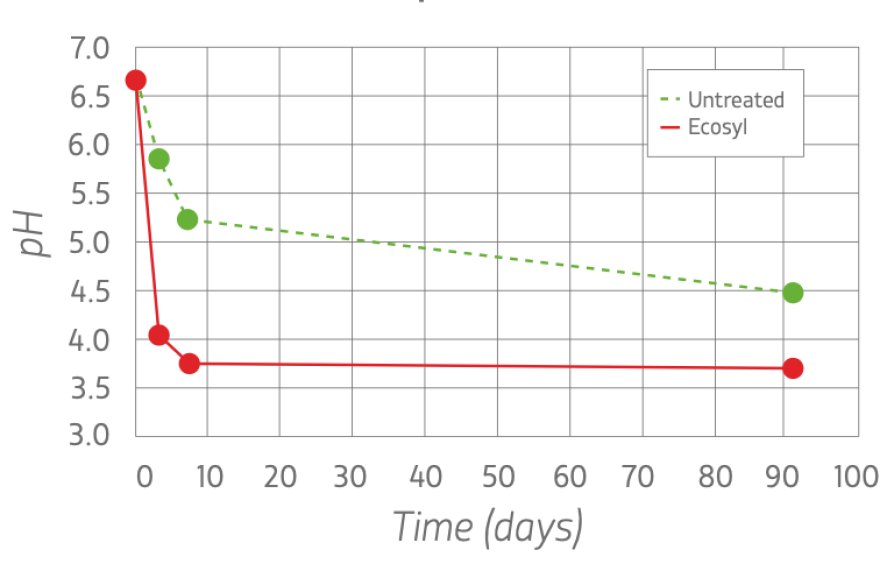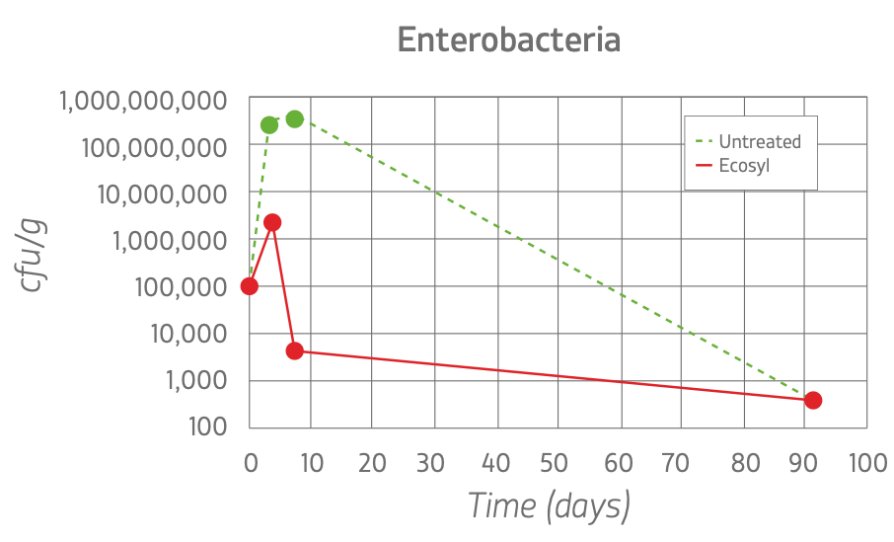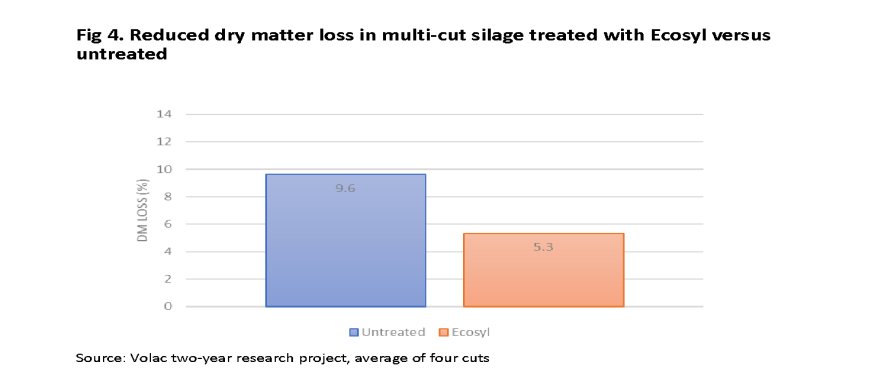Is a silage additive needed for multi-cut grass silage?
Although multi-cut grass offers several advantages, the higher protein content in younger grass can, in theory, contribute to buffering of the fermentation, while shorter cutting intervals between slurry applications can lead to increased risks from slurry bacteria. The combination of high buffering and the action of slurry bacteria leaves silage at risk of dry matter losses during fermentation.
In addition, sugar levels in younger grass tend to be lower – meaning less sugar for fermentation.
All of these factors suggest that the use of an additive containing a homofermentative species of bacteria, such as Lactiplantibacillus plantarum MTD/1 found in Ecosyl, to produce a more efficient fermentation, would be beneficial.
To check this, Volac scientists have conducted trial work to examine these ensiling risks and the specific benefits of using the Ecosyl silage additive in a multi-cut situation.
Results showed that while multi-cut grass had the potential to deliver more milk from forage, the numbers of naturally-occurring lactic acid bacteria in the crop were relatively low. Low lactic acid bacterial numbers can result in a slow initial fermentation.
At ensiling, the number of enterobacteria – the bad bacteria often associated with slurry – were almost 80 x higher than the natural lactic acid bacteria population when averaged over the four cuts, and as much as 1800 x higher for the fourth cut.
Where multi-cut was ensiled without an additive, not only was the fermentation slow, resulting in a slow pH fall that never reached the level in the treated silage, but enterobacteria increased rapidly in number soon after ensiling in the untreated crop. Moreover, at the end of the experiment, the average DM loss was nearly 10% in the untreated silage. There was also evidence of protein being broken down.
By comparison, where multi-cut was ensiled using Ecosyl, not only was the fermentation much faster, with the pH dropping rapidly, but the enterobacteria numbers in the silage were up to 100,000 times lower, and the average DM loss was virtually halved. There was also evidence that protein was better preserved.
The conclusions were that multi-cut had clear potential to unlock more milk from forage, by delivering a higher yield of a more nutritious forage. However, it is important to be aware of potential conservation challenges, to ensure nutrients are properly retained.
Summary of preservation findings from Ecosyl multi-cut trial
|
Without Ecosyl |
With Ecosyl |
|
|
Faster pH fall in multi-cut silage treated with Ecosyl versus untreated
 Source: Volac
Source: Volac
Lower numbers of enterobacteria in multi-cut silage treated with Ecosyl versus untreated
 Source: Volac
Source: Volac
Reduced dry matter loss in multi-cut silage treated with Ecosyl versus untreated
 What is the best chop length for multi-cut grass silage?
What is the best chop length for multi-cut grass silage?
With the leafier crop from multi-cut, there is a higher risk of slippage on the clamp. Therefore, consider a longer chop length to give structure to the clamp. Longer chop lengths also help to increase fibre in the silage. Using very short chop lengths with multi-cut grass are unlikely to give the desired silage.
When should first-cut be taken with multi-cut grass silage and what are the optimum multi-cut intervals?
The date for first-cut will vary depending on a number of factors, such as location in the country, but it should certainly be before grass comes into head.
Often the first cut will not be the biggest cut, but will be taken early in order to harvest overwintered grass before it starts dying back and to stimulate fresh spring growth.
In essence, go with the plant and cut early. Ryegrass is at its highest quality with three leaves; a fourth leaf means one is dead and rotting so energy density will be lower and dead or dying leaves increase the risk of bringing potentially harmful yeasts and moulds into the clamp.
For people wanting to make multi-cut, consider cutting intervals of less than six weeks, or down to 28-30 days because six weeks gives grass the opportunity to head. A one-week delay in cutting after heading could mean 3.5 units of digestibility value lost.
Be organised so that you are ready to go when the plant is. Make sure you also tell your contractor in advance if moving to multi-cut, as well as the correct chop length and mowing height. Do not assume they will know.